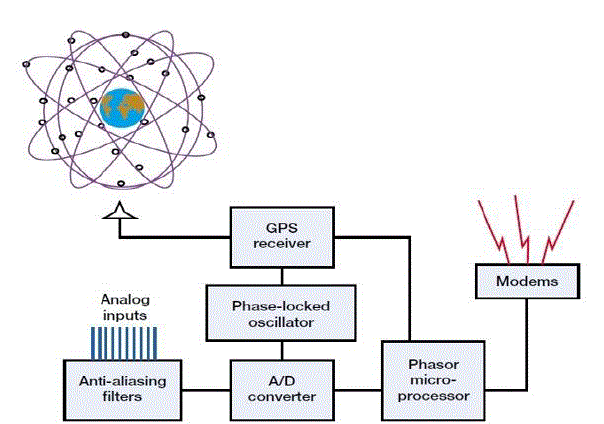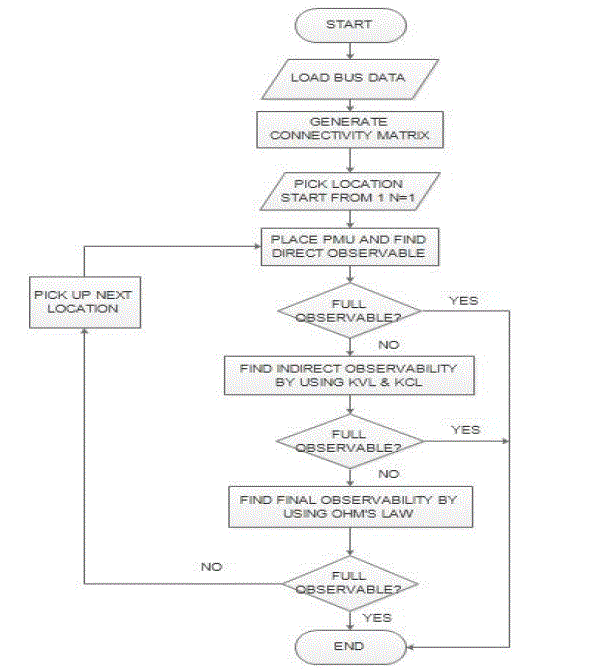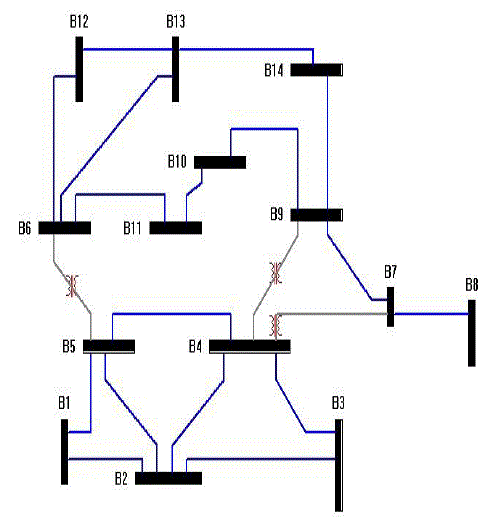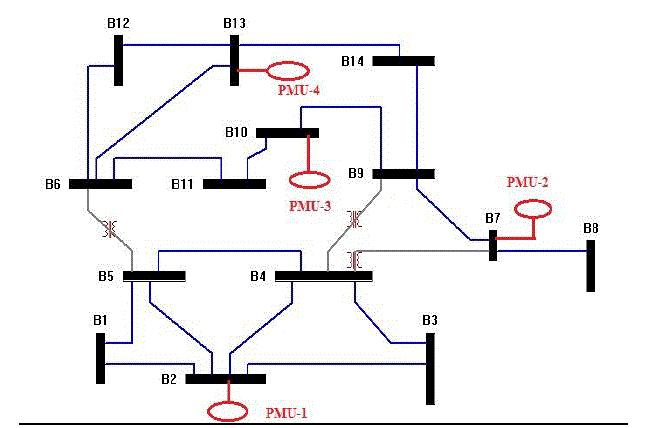Phasor Measurement Unit (PMU) is a relatively new technology that, when employed in power networks, offers real-time synchronised measurements of the voltages at buses and currents along the lines that connect them. This is accomplished by using a GPS based monitoring system which facilitates time synchronisation of measurements and unlike SCADA, makes the measured data available in Real-Time format. SCADA is not able to provide Real-time data due to the low speeds at which RTUs (Remote Terminal Units) provide data. Availability of time-stamped phasor measurements makes PMUs preferable for power system monitoring and control applications such as State Estimation, Instability Prediction Analysis, Real time monitoring of the system conditions, Islanding Detection, System Restoration and Bad Data Detection. Since PMUs are expensive, their procurement and installation needs to be planned both in terms of economy and utility. Usually utilities like to see that the power network becomes fully observable with minimum number of PMUs placed at strategic buses. Where full observability refers to all the buses in the network are actively monitored. Thus the problem of optimal placement of PMUs is formulated as an optimization problem where the number of PMUs is minimized subject to complete system observability. This paper solves the optimal placement of PMUs for power system observability using Integer Linear Programming (ILP) methodology. The method is tested on IEEE 14 Bus System.
Keywords |
| Integer Linear Programming, Phasor Measurement Units, Power System Observability. |
I.INTRODUCTION |
| Phasor Measurement Units are important devices in Wide Area Measurement, Protection and Control system studies.
PMU is a monitoring device, which can provide synchronized measurement of voltage and current phasor in a power
system. Synchronized signals are achieved from Global Positioning System (GPS) satellites [4].Synchronicity in PMU
is achieved by time stamping of voltage and current waveforms using a common synchronizing signal available from
the GPS [6]. |
| PMU measurements, in compare with SCADA system are taken at higher speed. Time stamping of each measurement;
provides the precise view of the entire network interconnections. In recent years, due to high cost of having PMU at
each node of the network, several research activities have been performed to locate minimal set of PMUs in order to
make the power system completely observable, with considering different operation conditions [4]. |
| PMU placement at all substations allows direct measurement of the state of the network. However, PMU placement on
each bus of a system is difficult to achieve either due to cost factor or due to nonexistence of communication facilities
in some substations. Moreover, as a consequence of Ohm’s Law, when a PMU is placed at a bus, neighboring busses
also become observable. This implies that a system can be made observable with a lesser number of PMUs than the
number of busses. |
| A PMU is a measurement processing device which is connected to buses at substations. The PMU makes use of
measured currents and voltages from voltage and current transformers. This is received in an analogue form and is
processed by an anti-aliasing filter which removes all components of the signal larger than half the Nyquist sampling
rate [5]. |
| The measurement signal is then put through an Analogue to Digital Converter (ADC). The digitised measurement is
thereafter time-stamped by the GPS clock. The digital samples go through a microprocessor which converts the
measurements into a phasor form of data. Now the measured sample is ready to be sent to the Phasor Data processor
(PDC). The PDC can be compared to a mini-control centre, only there may be multiple PDCs in a system. In other
words, singular centralised control is not necessary.
Figure |
| For systems of 50 to 60 Hz, 50 to 60 samples are provided per second respectively by the PMU. Figure shows a
diagram of control blocks of a PMU.The actual phasor is derived from the complex voltage and current sinusoidal
waveforms of the measured buses. PMUs measure the voltage phasor of the resident bus and current phasors in the
lines connecting the adjacent buses. |
| Phasor Measurement Units (PMU) allow the observer to get measurements of voltage phasor of all the bus as well as
the phasor currents for all lines incident to that bus. PMU placement at all substations allows direct measurement of the
state of the network. However, PMU placement on each bus of a system is difficult to achieve either due to cost factor
or due to nonexistence of communication facilities in some substations. Moreover, as a consequence of Ohm’s Law,
when a PMU is placed at a bus, neighboring busses also become observable. This implies that a system can be made
observable with a lesser number of PMUs than the number of busses. |
| In Reference [2] a unified approach is developed to find the minimum number and locations of PMUs such that the
power network is observable. In addition, it accounts for the existing conventional measurements in the mathematical
model of the optimal PMU placement strategy. Reference [3] presents an algorithm that avoids iterative addition of
measurements and allows simultaneous placement of PMUs for observability analysis. Presented method in reference
[4] proposes a method to place PMUs in the power system optimally in the cases of loss of normal operating and in the
case of any single PMU or single branch from the network. The method in reference [5] proposes a generalized integer
linear programming formulation for optimal PMU placement under different cases. In reference [6] the proposed model
is used to determine the optimal number and location of PMUs to make the system observable. |
II.SOBJECTIVE AND ASSUMPTIONS |
| PMU placement for Power System Observability is the main focus of this paper. The algorithm must produce
placement solutions that are cost effective and either similar to or better than placements of other algorithms.
The following assumptions were made during the process of this paper: |
| 1. All PMUs cost the same. |
| 2. There are sufficient telecommunication facilities for PMU operations. |
| 3. The proposed network does not utilize any existing conventional measurements and/or zero injections. |
III.OBSERVABILITY ANALYSIS |
| Observability Analysis is a fundamental component of real time state estimation. Observability analysis of electric
power system is to study whether there is enough measurement in system in order to estimate the state of electric power
system including the amplitude value and phase angle of the voltage.If the voltage of a node can be measured directly
or can be calculated by other voltage phasor or current phasor, the node is observable. |
IV.PROBLEM FORMULATION |
| The minimum PMU placement problem is NP-complete, which can be solved by either mathematical algorithm or
heuristic algorithm.The number of PMUs will have to be minimised due to cost and communication line availability.
Consider the IEEE 14 Bus System and its measurement configuration shown in Figure 3.
The task of optimal PMU placement can be solved by using a binary integer linear programming approach [5]. |
| The objective function is given below: |
 |
| The constraints are thus given as equation AX ≥ b_L |
| Where b_L is a vector: [1 1 1 . . . 1]T, which generates the constraint that each bus must be observed by at least one
PMU. The algorithm for Integer Linear Programming is shown in Figure 2. |
V. SIMULATION RESULT |
| The presented method in this paper is programmed on MATLAB and binary integer linear programming problem has
been solved in order to find the best PMU placement with complete Power System observability and minimum
installation cost.In order to examine the validity of the proposed algorithm, it has been tested on IEEE 14-bus as shown
in Figure 3. |
| The technical specifications of the computer used for these simulations are given in Table I |
| Integer Linear programming problem is solved in MATLAB using the TOMLAB Optimization Toolbox [1]. Table 2
shows the results of optimal PMU placement for the IEEE 14-bus system, which has no other conventional power flow
or injection measurements. |
| The graphical representation is shown in Figure 4. The four PMUs installed at bus 2, bus 7 and bus 10, and bus 13 can
make the whole system observable. |
VI.CONCLUSION |
| A generalized method based on binary integer linear programming is used to find the optimal number and location of
PMUs, to make whole system completely observable. Keeping entire system observable in case of any contingencies
and minimizing total installation cost are the main aims of this paper. |
Tables at a glance |
 |
 |
| Table 1 |
Table 2 |
|
| |
Figures at a glance |
 |
 |
 |
 |
| Figure 1 |
Figure 2 |
Figure 3 |
Figure 4 |
|
| |
References |
- [online] “TOMLAB solver packages available for use in Matlab, The TOMLAB Optimization Environment”, 2014, URL: http://tomlab.biz/
- Nabil H. Abbasy, Hanafy M Ismail, “A Unified Approach for the Optimal PMU Location for Power System State Estimation”, IEEETransactions on Power Systems, Vol. 24, pp.806-813, 2009.
- Bei Gou, Ali Abur, “An Improved Measurement Placement Algorithm for Network Observability”, IEEE Transactions on Power Systems, Vol. 16, pp.819-824, 2001.
- Nima Amin, Mahdi Banejad, “Generalized Formulation for Optimal Placement of PMUs Considering Single Unit or Single BranchOutage”,21stIranian Conference on Electrical Engineering (ICEE), pp.1-5, 2013.
- Bei Gou, “Generalized Integer Linear Programming Formulation for Optimal PMU Placement”, IEEE Transactions on Power Systems, Vol. 23, pp.1099-1104, 2008.
- GomathiVenugopal, RamachandranVeilumuthu, ChellamalArumugam, “Optimal Location of PMUs for Complete Observability of Power System Sub Network”, ACEEE International Journal on Control System and Instrumentation, Vol. 1, pp.26-30, 2010.
|